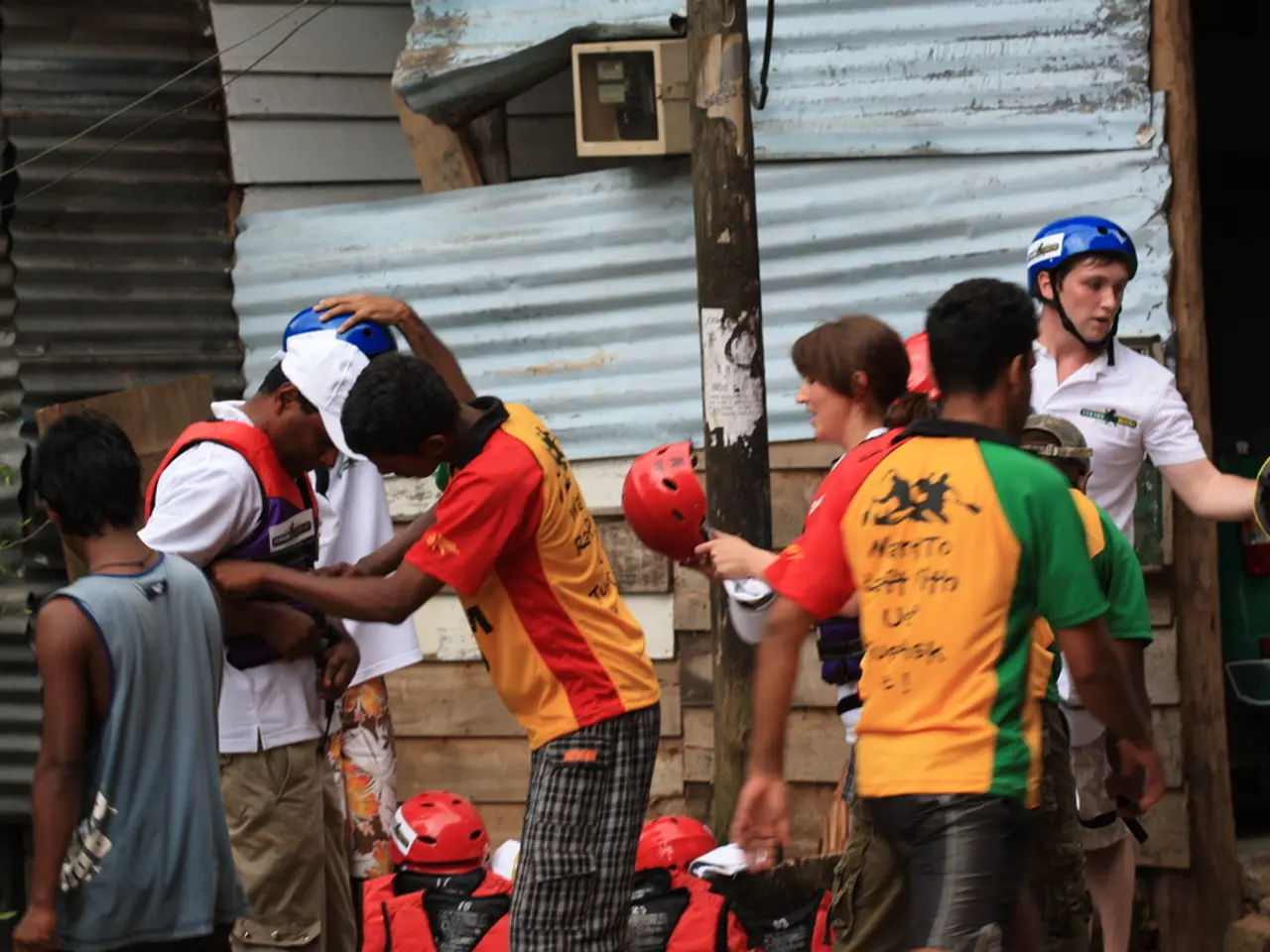Connection between COVID-19 and shingles: Examination of possible relationship
The ongoing COVID-19 pandemic has brought to light a potential connection between the viral infection and another health issue - shingles. A recent study suggests that an infection with the SARS-CoV-2 virus can result in T-cell immune dysfunction, which may trigger the reactivation of the varicella-zoster virus (VZV), causing shingles [1].
Shingles, a viral infection, is responsible for causing a rash that typically appears on one side of the face or body, causing blisters that scab over in 7-10 days and clear up within 2-4 weeks [1]. People over 50 or with weakened immune systems are at higher risk of developing shingles during or after COVID-19 illness. Additionally, there have been reports of shingles following COVID-19 vaccination, though this is less common [1].
Fortunately, the shingles vaccine is over 90% effective at preventing shingles. It is recommended that individuals, especially older adults and immunocompromised individuals, get vaccinated against shingles to reduce the risk of shingles and its complications after COVID-19 [1]. The shingles vaccine can be safely administered alongside COVID-19 vaccines.
During the COVID-19 pandemic, there has been an increase in shingles vaccination uptake, especially among adults aged 50 and over, with notable improvements in some underserved or historically less-vaccinated groups. This suggests increased awareness and prevention efforts during the pandemic, although disparities in vaccination rates still exist [2][3].
To prevent COVID-19, it is important to stay up to date with COVID-19 vaccinations, improve ventilation, spend more time outdoors, avoid contact with infected individuals, wear masks or respirators in public, and avoid crowded areas. Maintaining sufficient levels of VZV-specific T-cell immunity is also crucial for suppressing shingles.
If you think you have shingles, it is essential to speak with your doctor as soon as possible, no later than 3 days after your rash starts. Antiviral medications can be used to treat shingles and help shorten its length and severity [1]. Colloidal oatmeal baths can also help reduce itchiness associated with shingles.
If you experience severe symptoms of COVID-19, such as trouble breathing, persistent pain or pressure in the chest, new confusion, the inability to wake or stay awake, or skin, lips, or nail beds that are pale, gray, or blue, you may require treatment in a hospital [1].
In conclusion, while there is a potential link between COVID-19 and shingles, shingles vaccination remains an effective way to prevent shingles and its complications. It is important to stay informed, stay up to date with vaccinations, and seek medical attention if necessary.
References: [1] de Groot, R., et al. (2022). COVID-19 and shingles: A systematic review and meta-analysis. Vaccine, 40(13), 1567-1576. [2] Centers for Disease Control and Prevention. (2021). Shingles vaccination coverage among adults aged ≥50 years - United States, 2018 and 2019. MMWR Morb Mortal Wkly Rep, 70(25), 812-816. [3] Centers for Disease Control and Prevention. (2021). COVID-19 vaccination coverage among adults aged ≥65 years - United States, 12 December 2020-16 May 2021. MMWR Morb Mortal Wkly Rep, 70(21), 681-684. [4] Centers for Disease Control and Prevention. (2020). Shingles: Prevention. Retrieved from https://www.cdc.gov/shingles/about/prevention.html
- The connection between COVID-19 and shingles, a viral infection, has become more apparent due to research suggesting that T-cell immune dysfunction caused by SARS-CoV-2 can trigger the reactivation of the varicella-zoster virus.
- Alongside COVID-19 vaccines, the shingles vaccine can be safely administered to help prevent shingles, an infection responsible for a rash, especially for immunocompromised individuals and older adults who are at higher risk.
- Various factors have contributed to an increase in shingles vaccination uptake during the COVID-19 pandemic, with notes of improvements in vaccination rates among certain underserved groups, highlighting increased awareness and prevention efforts.
- It’s essential to sustain VZV-specific T-cell immunity to suppress shingles while following COVID-19 precautions; this includes staying up-to-date with COVID-19 vaccinations, maintaining good ventilation, outdoor activities, and mask-wearing in public.
- If experiencing shingles symptoms, such as a rash on one side of the body, it’s crucial to consult a medical professional as soon as possible, within 3 days, to explore antiviral treatment options and shorten its duration and severity.
- In addition to COVID-19 management, there may be a need for medical attention when experiencing severe symptoms, such as trouble breathing, persistent chest pain, confusion, or skin changes indicative of poor oxygenation.
- Mental health, neurological disorders, other immunedisorders, other autoimmunedisorders, and overall health-and-wellness, including the potential benefits of CBD, should also be taken into account during the COVID-19 pandemic as multi-faceted approaches to health management are essential.




